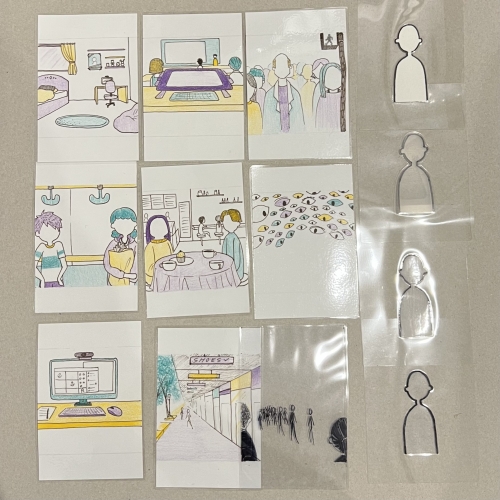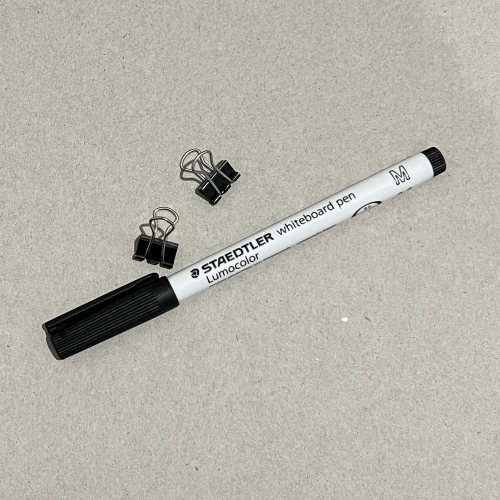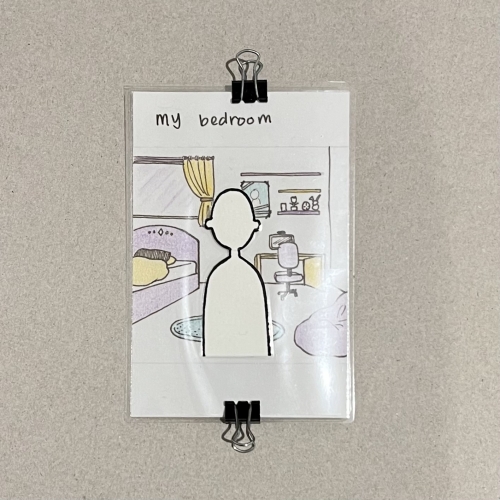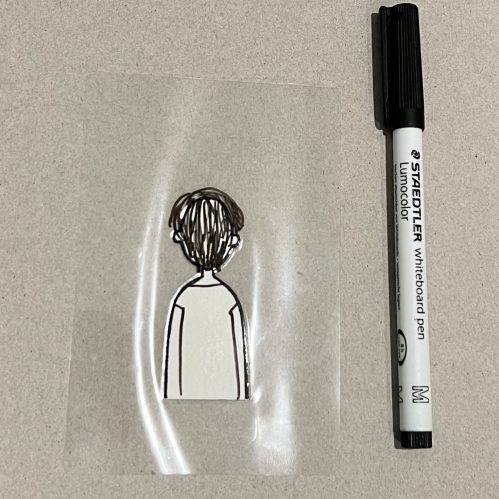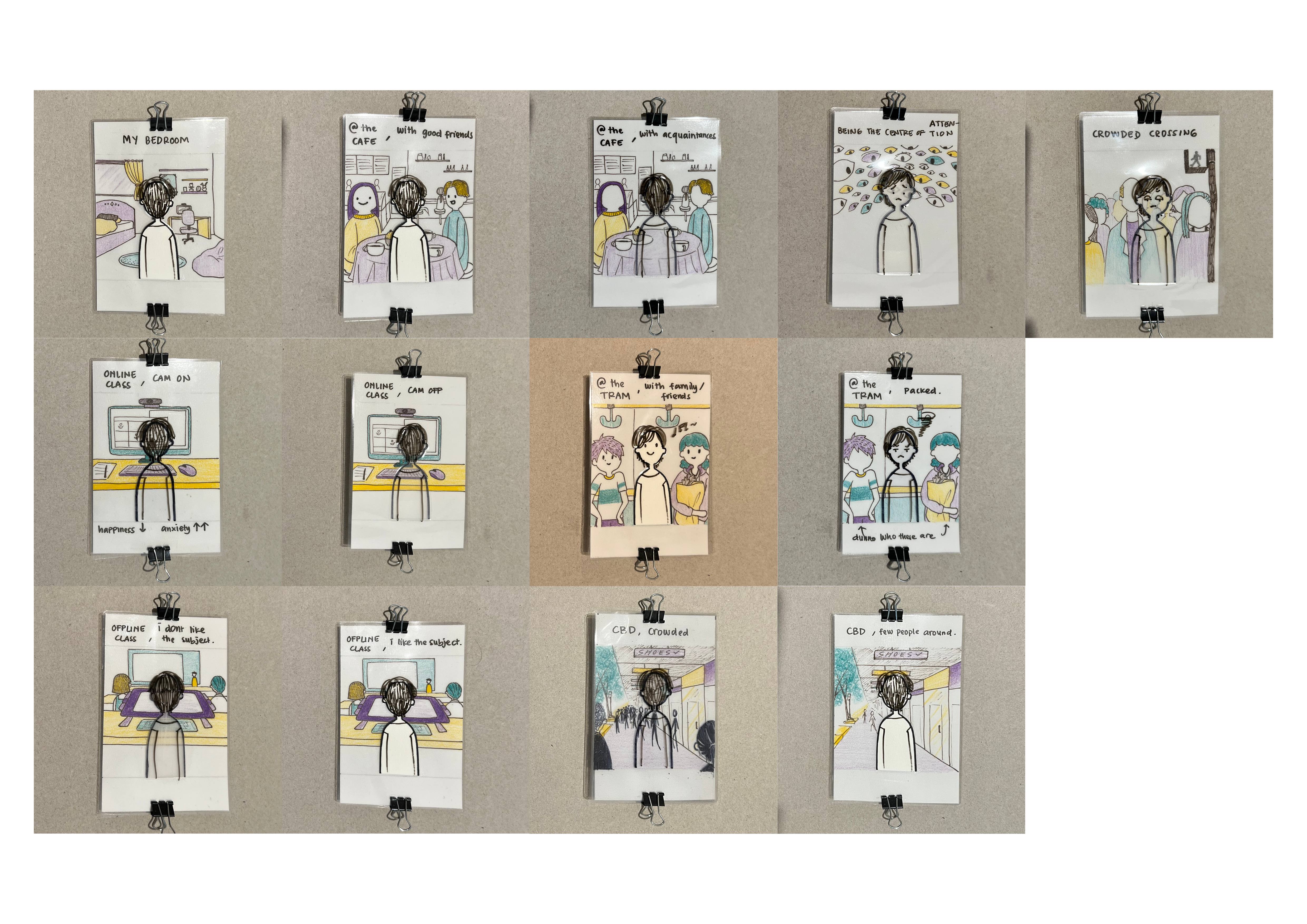
Theme: W1 - Play and Self
On this week’s theme of Play and Self, I created a set of interactive cards. There are 2 sets of cards, one set of various everyday life situations and a set of figures varying in their transparency. These interactive cards are meant to provoke reflection and observation of our behaviour and thoughts in different settings/situations. The transparency of the figure cards reflects on how present you are in the situation, or how much you want to be in the situation.
What you need before playing: the cards, 2 small bulldog clips, a whiteboard marker and tissue.
How to play:
- Separate the 2 sets of cards.
- Personalise the figure cards to represent yourself more accurately – or leave them be. The figure cards signify yourself.
- Take one situation card and match it with one of the figure cards that best represent you.
- Take a picture of each match and compile them all into one collage. The final collage will be your portraiture that reflects on yourself in different daily situations.
- You can write descriptions on the top/bottom of the situation cards to make them more specific. You can also add faces to the figures in the situation cards to create context. For example, if you add a face, it can mean that the figure is significant to you (not a stranger).
- Simply wipe the drawings and writings on the card surface with tissue and you can start again with different variations.
Method
The figure cards are made by cutting shapes of figures out of materials with different transparency. The situation cards are traditional drawings on paper. Then they are all laminated and cut into a uniform dimension. The lamination is to allow the cards to be drawn over for personalisation and cleaned easily.
The reason for making physical, tangible cards are mainly for interactivity. These cards can be played together, allowing conversation between individuals which has a social impact and allowing them to bond or have a deeper understanding of each other. Personalization is also easier done physically, rather than if it is done on screen as not everyone might have the most suitable device to do so.
Context
This exercise is mainly driven by the idea of the significance of interactive art and how we can have self-realization through play. Interactivity can help realizing the true potential and intention of the work, it “needs to be actuated by a “user”” (Costello, 2009). Another theory from a different article that becomes the base of this practice is “… that play is a biologically driven project of self-understanding and self-realization, one that humans—although they also share the experience with other creatures—have developed most fully as a part of their psychological and social life.” (Henricks, 2014). These readings helped me come up with an idea to create interactive art as a device of self-reflection and observation. The intention is to allow the player to think about how their behaviours and thoughts and reflect on them. Are these behaviours good? Do they need to be adjusted? Is there a tendency of feelings and behaviours in similar situations? These are examples of reflection questions that can be answered upon playing the cards. The collage allows us to see ourselves from a more general point of view, as we tend to focus on the occurring situation in life, one at a time.
Reflection
There is room for improvement on the cards, especially the figure cards. The different transparencies are not very distinguishable in the photographs, specifically between the completely transparent and 25% transparency figure cards. This creates confusion while looking and reflecting on the collage. Furthermore, there are some inconsistencies which add extra work in personalising the cards, some are front facing and some are backward facing. Additionally, it is not very practical to take a picture of each card match one by one. I think it disrupts the flow of playing, although very minimal. Overall, I’m quite happy with my first try at making an interactive work that can be played by people other than myself.
Reference:
Brigid Costello. (2009). Play and the Experience of Interactive Art [University of Technology Sydney]. http://hdl.handle.net/10453/20215
Thomas S Henricks. (2014). Play as Self-Realization: Toward a General Theory of Play. American Journal of Play, 6(2), 190–. https://eric.ed.gov/?id=EJ1023798
About This Work
By Eugenia Cynthiaputri
Email Eugenia Cynthiaputri
Published On: 27/07/2022

